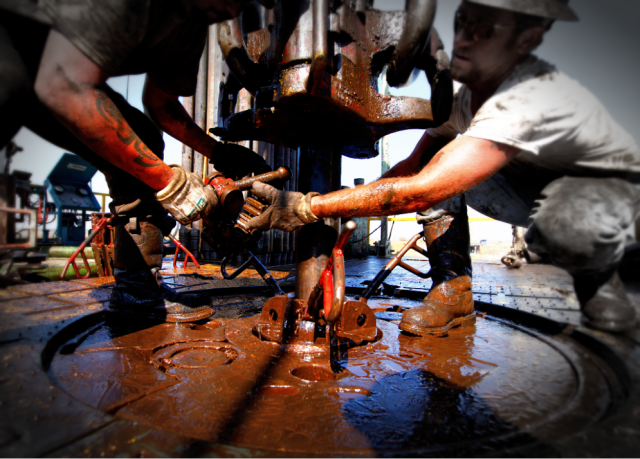
(Source: Hart Energy)
Cash-strapped? Bad credit? Out of things to marketable assets to sell? That’s a problem.
The best option may just be to wait out what has essentially been a half-decade of downcycles in the oil and gas sector.
At a recent discussion held during Summer NAPE on the future of oil and gas capital markets called “Where’s the Money Going to Come From” the industry’s bone-crushing fall from grace, panelists said even the usual protection afforded companies with PDP assets has failed.
Jim Wicklund, managing director for Stephens Inc., set the stage for the panel and the oil and gas industry’s version of Macbeth.
“Most of the production that we brought on over the last several years was not economic,” Wicklund said. “If you look at the 21 E&P companies that have been public over the last 10 years, they outspent cash flow for seven of those years in order to build value. Over that 10 years, these 21 companies lost $96 billion in market cap value and $36 billion in net income.”
The problem is now that energy investments make up just 2.5% of the S&P 500, the industry is trying to meet the demand of positive new income. As the industry has struggled, they’ve spread the pain among private equity banks, direct lending companies and investors.
What emerges will be an energy banking sector that is far less tolerant of risk. Mari Salazar, senior vice president and manager for BOK Financial, said that when she started in energy banking, banks felt secured if operators had PDP.
“You were a senior secured lender and you really didn’t have much of a risk for loss that has really changed these days,” she said. “You’ve seen articles where banks have taken $0.31 on the dollar or $0.50 on the dollar. And that’s really what I think has changed the market.”
The pandemic “allowed us to rethink how we’re approaching our customers and really needing to prepare ourselves for the fall and what that would look like.”
Banks, now aware of their vulnerabilities, will place stricter controls on lending.
“You’re going to see tighter structures. We're starting to see that now [with] cash flow sweeps, tighter RP [restricted payments] baskets,” she said.
Dan Pickering, chief investment officer for Pickering Energy Partners, said the industry had focused on growth because of commodity prices and support form OPEC. Now it’s the worst-performing sector in the S&P on a one-, three-, five- and 10-year basis.
“We're six years into a downturn here,” he said.
But energy is still relevant. Pickering said investors can be lured back by giving them money. Free cash flow has to be returned to investors and not sunk back into the ground.
“We probably need to see oil in the 50s, free cash generated by the company and some of that cash given back to the investor basis that will start to bring people back,” he said. “Greed will bring people back.”
If there’s one silver lining from the pandemic, said Steven Cobb, vice president of private equity firm Pearl Energy Investors, it’s made clear “who are the haves and who are the have nots.”
“The ability to kind of select what assets, what companies are truly investible—you had a pretty clear picture of it for a short while,” he said. “Obviously, there’s still distressed [companies] out there today, but you know, I think what happens is the haves have a great opportunity to continue to raise some form of capital and start growing through and picking up some of these zombie companies.”
Cobb said good companies will engage in M&A and restructurings.
For the rest, “if you're a private equity firm, if you're an operating company, if you're not growing today in generating real scale, it's going to be really hard to create value.”
Pickering also expects a number of “zombie” companies with mediocre assets and fair balance sheets to “limp along for a long time in sort of purgatory.”
“A lot of it’s in the hands of these have nots, and some are going limp along and, and sort of survive, but not thrive. And others are going to have to get restructured,” he said.
But Pickering offered some sunlight on the industry’s many challenges.
“The reality is there is a great opportunity,” he said. “This is sort of our generation’s 1986 and what came after ‘86, which was a terrible year in the oil patch, was some really good returns and great returns for investments.”
“We’re going to make money, putting money to work down here over the next two, three, four years. And it may take a while for people to realize that’s coming,” he continued.
Recommended Reading
Range Resources Holds Production Steady in 1Q 2024
2024-04-24 - NGLs are providing a boost for Range Resources as the company waits for natural gas demand to rebound.
Hess Midstream Increases Class A Distribution
2024-04-24 - Hess Midstream has increased its quarterly distribution per Class A share by approximately 45% since the first quarter of 2021.
Baker Hughes Awarded Saudi Pipeline Technology Contract
2024-04-23 - Baker Hughes will supply centrifugal compressors for Saudi Arabia’s new pipeline system, which aims to increase gas distribution across the kingdom and reduce carbon emissions
PrairieSky Adds $6.4MM in Mannville Royalty Interests, Reduces Debt
2024-04-23 - PrairieSky Royalty said the acquisition was funded with excess earnings from the CA$83 million (US$60.75 million) generated from operations.
Equitrans Midstream Announces Quarterly Dividends
2024-04-23 - Equitrans' dividends will be paid on May 15 to all applicable ETRN shareholders of record at the close of business on May 7.






